
Research Article
Austin J Earth Sci. 2022; 5(1): 1026.
Earthquake Precursors Cause Far More Devastating Damage Cost than Earthquakes
Prakash Pillai S* and Prakash Pillai A
PNT NDT Consultant, Tiruchi, Tamil Nadu, India
*Corresponding author: S Prakash Pillai, PNT NDT Consultant, Tiruchi, Tamil Nadu, India- 620101. Email:apaprakash@yahoo.co.in
Received: May 16, 2022; Accepted: June 14, 2022; Published: June 21, 2022
Abstract
Earthquake precursors and earthquake prediction not shrouded in mystery or Holy Grail. Seasonal and unseasonal weather hazards are due to the part of the generation process of earthquakes. Earthquake precursors are generated by the earthquake itself, but this vital basic scientific concept unable to understand by worldwide researchers.
Weather hazards are the earthquake precursors they are the combination of several weather phenomena like extreme heat, forest fire, cyclone, hurricane (Atlantic Cyclone), typhoons (Pacific Cyclone), tornadoes, storm surge, heavy rain for days, landslides, flood, cold waves, avalanches, melting of ice and breaking of ice continent but earthquakes are single phenomenon. Each weather hazards because damage cost in Billion USD and a single earthquake of M>7 also cause damage cost in Billion USD. However, the overall destruction and damage cost of weather hazards are in Trillion USD as earthquake precursors are much more damage cost than earthquakes.
‘’Richter did not advocate an opinion that earthquake prediction was inherently impossible.”
Keywords: Earthquake Precursors; Weather Hazards; Earthquakes; Damage Costs; Cyclone; Hurricane; Typhoon; Tornadoes; Snowfall; Iceberg Break; Forest Fire; Heatwaves
Introduction
This article is fifth in series of earthquake prediction method in Austin Journal of Environmental Sciences. In this paper discuss the comparisons of damage cost of earthquake precursor caused and earthquake caused. Before to compare, let us see what are the earthquake precursors? The generation process of natural weather hazards are the part of generation process of earthquakes. Weather hazards are in different forms, they are including, severe heat, forest fire, cyclone, typhoon, Hurricane, storm, tornadoes, rainfall, flood, lands slide, strong wind, thunderstorms, lightning, storm surge, snowfall, hailstorm, avalanches, snow melting, and breaking of ice shelf at Arctic and Antarctic regions. All these phenomena are related to atmospheric conditions that can be monitored and forecast.
How a gentle breeze not to be a precursor for Category 5 hurricane, so, the swarms of earthquakes or fore shocks not be precursor for main shocks. Earthquake precursors are same for all size of earthquakes say fore shocks, main shocks and aftershocks.
The common systematic relation between potential earthquake precursors and earthquakes are destructive and damaging nature. Precursor hazards began normally 15 days before impending earthquakes to occur. Every epicentre zone serves as cyclone genesis basin as well as seismogenic zones. Weather phenomena closely coupled with the generation process of seismic phenomena, in this way weather phenomena are the precursor for earthquakes.
For the past several decades wrong statements about earthquake precursors have been circulated by eminent experts in high impact factor journals. This same misconception followed in major earthquake research organizations and Universities worldwide. Earthquake precursors are inherent with the earthquake itself, for every earthquake more than one weather phenomenon advance 15 days before an impending individual or cluster of earthquakes. There are several advanced technologies available to observe and record the onshore weather phenomena as earthquake precursors.
The release of massive amount of frictional heat of the tectonic plates are playing a major role in accompanying with all types of weather hazards and also thinning of tectonic plates (generation process of weather anomalies) to breaking of tectonic plates (earthquakes). But the different forms of weather hazards, it depends on the location of the epicentre zone, say Icey continent or at equator or above or below to equator.
Methodology
The duration of earthquakes are few seconds to few minutes, whereas weather hazards last for over one or two weeks. Earthquakes are occurs confined to particular epicentre zones and for few km in radius, whereas weather hazard like cyclone/typhoon/ hurricane/ tornadoes travel thousands of miles away from its origin.
Till date in the USGS frequently asked question part, it is mentioned that reliable and diagnose earthquake precursors not found and earthquakes are unpredictable. Like that there are several misconceptions about reliable earthquake precursors and predictable nature of individual or population of earthquakes misguiding the researchers. The earthquake precursors are generated by the earthquakes itself. Researchers failed to understand and link the weather anomalies with earthquakes and also missed to record the same.
For earthquakes of M4-6 there would no major damage cost when compare to the earthquake precursors the weather hazards for this range, will generate severe heat waves, forest fires and cyclone cause damage. Even for earthquakes M<4 practically do not cause any significant damage to the lives and properties but cause regional severe heat wave condition around the particular epicentre zones.
Both atmospheric weather anomalies and earthquakes are origin wise strongly inter-related; both events are repeating every year at same place to the corresponding epicenter zones with respect to the position of the orbital motion of the earth. Without tectonic plate motion of the epicenter zones, there will be no generation of atmospheric weather anomalies and earthquakes. All form of atmospheric weather anomalies are the precursor to earthquakes. Most common weather anomalies are heat, rainfall associated with strong winds and widespread flood. Among the all form of weather anomalies rainfall or snowfall location best to identify the future earthquake location.
Result: Earthquake Weather Precursors and Followed by Earthquakes
Comparison of Earthquake Precursors (Natural Weather Hazard) Damage Cost with Earthquakes
The epicentres may be in Pacific west, Pacific East, North Atlantic, Antarctic, North India, South India, South Pacific Islands and others depending on their geological position, atmospheric weather are generated as seasonal variation. Tectonic plates frictional only associated with all weather anomalies from Arctic to Antarctic regions.
Heat Waves and Damage Cost
Productivity losses due to heat currently cost the U.S. an estimated $100 billion a year, the report claims. As days of extreme heat become more frequent in the years ahead, that figure is projected to double to $200 billion by 2030—around 0.5% of GDP.
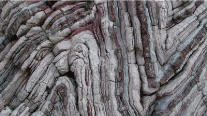
Figure 1: Tectonic Plates.
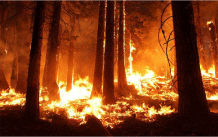
Figure 2: Forest Fire.

Figure 3: Cyclone.
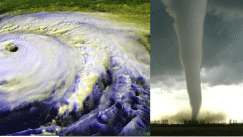
Figure 4: Hurricane and Tornado.
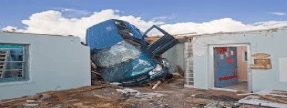
Figure 5: Damage caused by Tornadoes.
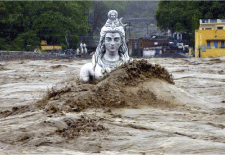
Figure 1: Uttarakhand Flood, India.
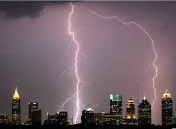
Figure 7: Lightening strike.

Figure 8: nowfall.
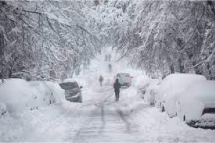
Figure 9: Snowstorm.
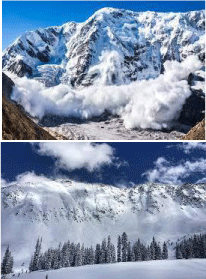
Figure 10: Avalanches.

Figure 11: East Antarctic ice is melting.

Figure 12: Antarctica Ice shelf collapsed.
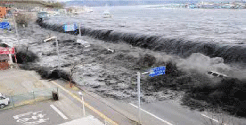
Figure 13: Earthquake.
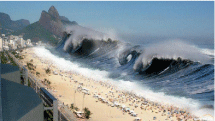
Figure 14: 2004, Tsunami.

Figure 15: Earthquake caused structural damage.
Forest Fire
When counting insured losses, the 2020 wildfire season is estimated to have produced between $5 billion and $9 billion in destruction, and this comes after wildfire seasons in 2017 and 2018 that each produced more than $10 billion in insured losses.
Since 2000, 15 forest fires in the United States have caused at least $1 billion in damages each, mainly from the loss of homes and infrastructure, along with firefighting costs.
A 2017 study led by the Environmental Protection Agency estimated that the cost of short-term exposures to US wildfires occurring between 2008 and 2012 that led to premature deaths or hospital admissions at $63 billion; the cost of long-term exposures was estimated at $450 billion.
Cost of Wildfire Seasons
When counting insured losses, the 2020 wildfire season is estimated to have produced between $5 billion and $9 billion in destruction, and this comes after wildfire seasons in 2017 and 2018 that each produced more than $10 billion in insured losses.
In 2020, for example, a team of researchers studied the nationwide impact of California’s 2018 wildfire season, and estimated that its economic damage totaled $148.5 billion.
Hurricane/Cyclone
Cyclone: The destruction from a tropical cyclone, such as a hurricane or tropical storm, depends mainly on its intensity, its size, and its location. Tropical cyclones remove forest canopy as well as change the landscape near coastal areas, by moving and reshaping sand dunes and causing extensive erosion along the coast.
Main effects of tropical cyclones include heavy rain, strong wind, large storm surges near landfall, and tornadoes. Cyclones are dangerous because they produce destructive winds, heavy rainfall with flooding and damaging storm. The heavy rains from tropical cyclones can also cause flooding.
Hurricane and Tornadoes
Hurricanes are powerful storms that develop in a circular pattern over warm ocean water. Hurricane Irma which is one of the strongest hurricanes on record produce winds of 185 mph. Each hurricane usually lasts for over a week, moving 10-20 miles per hour over the open ocean. Hurricanes tend to cause much more overall destruction than tornadoes because of their much larger size, longer duration and their greater variety of ways to damage property. Tornadoes and hurricanes may be similar in that they both have extreme winds circulating around their centre that can cause damage.
Hurricane Damage Cost
Every year, hurricanes harm millions of people living along the Atlantic and Gulf coasts. Hurricanes are known to cause mental suffering in their victims. Before, during, and after these types of storms, people commonly experience intense anxiety, continual worrying, difficulty sleeping, and other depression-like symptoms. Other symptoms of hurricane-related emotional distress include:
Of the 310-billion-dollar weather disasters between 1980 and 2021, tropical cyclones (or hurricanes) have caused the most damage: over $1.1 trillion total, with an average cost of $20.5 billion per event. They are also responsible for the highest number of deaths: 6,697 between 1980 and 2021. 2018 and 2019: $136 Billion in Damages
Tornadoes
Tornadoes are produced when two differing air masses meet. When cooler polar air masses meet warm and moist tropical air masses, the potential for severe weather is created. It is a well-known fact that tornadoes and severe thunderstorms often form along drylines.
Tornadoes can also go from being stationary to 70 miles per hour in a matter of seconds and can strike with little or no notice, giving those in affected areas only seconds to seek shelter. The most intense winds in a tornado can exceed 300 miles per hour, while the strongest known Atlantic hurricane contained winds of 190 miles per hour.
On average we see about 1,000 tornadoes in the United States every year, while averages of six Atlantic Basin hurricanes form each year. Of those six annual hurricanes, about 26 percent make landfall in the United States. One huge difference between tornadoes and hurricanes is size. Tornadoes are much smaller in scale with damage paths in extreme cases being as wide as 1 to 1.5 miles wide. The widest tornado ever recorded was 2.5 miles wide. Tornadoes are produced by individual thunderstorms which are much smaller than an entire hurricane. Thunderstorms that produce tornadoes are usually on the scale of around 10 miles or so wide. Hurricanes, on the other hand, are measured in hundreds of miles and are made up of numerous thunderstorms. Tornadoes cannot produce hurricanes, but land falling hurricanes often produce tornadoes from the thunderstorms.
Tornadoes don’t last as long as hurricanes can. Hurricanes generally will last for days or weeks, while tornadoes typically last from a few seconds to over an hour. Tornadoes generally will travel short distances to occasionally many miles. The most extreme tornado in recorded history was the Tri-State Tornado, which spread through parts of Missouri, Illinois, and Indiana on March 18, 1925. It holds records for longest path length at 219 miles and for longest duration
At about 3½ hours. Hurricanes can travel hundreds or even thousands of miles. In 1966 hurricane Faith travelled for 6,850 miles, making it the longest track of an Atlantic hurricane on record.
Tornadoes Damage Cost
Tornadoes that broke out across eight states are expected to cost about $18 billion in total damage and economic loss National Centers for Environmental Information (NCEI) reveals. In the past decade, tornadoes have caused more than $14.1 billion in total damage across the U.S. Every year in the United States, tornadoes do about 400 million dollars in damage and kill about 70 people on average.
Typhoon
Typhoon Tip was the largest tropical cyclone on record, with a diameter of 1,380 mi (2,220 km)—almost double the previous record of 700 mi (1,130 km) set by Typhoon Marge in August 1951. At its largest, Tip was nearly half the size of the contiguous United States.
Distance Travelled by Typhoon
These winds tend to reverse the direction of the tropical cyclone to an eastward path. As the tropical cyclone moves pole ward it picks up forward speed and may reach 30 m.p.h. or more. An average tropical cyclone can travel about 300 to 400 miles a day, or about 3,000 miles before it dies out.
Typhoon Damage Cost
The most devastating year was 2019, when Typhoons Hagibis, Faxai and Lekima caused combined damages of more than $34 billion in Asia. 2020 was more subdued when it comes to Pacific storms. Cyclone Amphan, however, caused major damages of $14 billion in India, Sri Lanka, Bangladesh and Thailand that year.
Flood and Flood Damage Cost
Floods and droughts the most fatal disaster events may cause havoc on agriculture and are one of the leading causes of famine. The 1931 Central China floods killed three or four million people, making it the greatest natural disaster in history (excluding pandemics).
Floodwaters can also alter the landscape, for instance, by eroding riverbanks and causing them to collapse. As floodwaters carry material from the eroded banks, sediment becomes suspended in the water, which can degrade water quality and lead to harmful blooms of algae.
Floods cause more than $40 billion in damage worldwide annually, according to the Organization for Economic Cooperation and Development. In the U.S., losses average close to $8 billion a year. Death tolls have increased in recent decades to more than 100 people a year.
Just 1 inch of water can cause $25,000 of damage to your home.
Top line. A study of 729,999 commercial and residential properties in the contiguous U.S. concluded that floods will cost businesses $26.8 billion in direct lost output and $23 billion in lost output due to downtime in 2022.
The cost of flood damage was approximately $17 billion annually between 2010 and 2018, according to testimony from Federal Emergency Management Agency representative Michael Grimm. First Street does not have comparable estimates for 2020 or 2019.
Flooding has cost US taxpayers more than $850 billion since 2000 and is responsible for ⅔ of the cost from all natural disasters. In small towns and large cities, floods have inundated homes, cut-off communities, and left the scars of financial and emotional distress across the whole country.
The total cost for the last five years ($742.1 billion) is more than one-third of the disaster cost total of the last 42 years ($2.155 trillion). This reflects a five-year cost average of nearly $148.4 billion per year.
Lightening Energy
With an average bolt of lightning striking from cloud to ground containing roughly one billion (1,000,000,000) joules of energy, that is a lot of power in every lightning bolt!
Lightening Damage Cost
Lightning fires in non-residential properties caused an average of $108 million in direct property damage each year from 2007 to 2011, according to the survey. The average annual damage in nonresidential properties includes: $28 million in storage facilities.
Snowfall
A winter storm could mean heavy snow, damaging ice, cold temperatures and widespread power outages. Bankrate explores the most expensive winter storms in U.S. history to help you understand the potential damage these storms can cause and know how to prepare to mitigate your risks.
Heavy snow can immobilize a region and paralyze a city, stranding commuters, closing airports, stopping the flow of supplies, and disrupting emergency and medical services. Accumulations of snow can cause roofs to collapse and knock down trees and power lines.
The economic damage from this winter will be well above the average. That’s because in January alone — before the big February snows that have dumped record levels of snow on Worcester - the U.S.’s economic damage from the winter weather of January 2015 was estimated at $500 million, according to Impact Forecasting.
The average economic damage from winter storms over the last 20 years has been about $1 billion a year.
“From 1994 to 2013 winter storms resulted in about $27 billion in U.S. insured catastrophe losses (in 2013 dollars), or more than $1 billion a year on average, according to Property Claim Services and the Insurance Information Institute,” according to Insurance Journal.
Snow Storm and Damage Cost
A storm where precipitation falls as snow is called a snowstorm. In the winter, most precipitation forms as snow within the clouds because temperatures at the top of the storm are cold enough to make snowflakes.
Avalanches
An avalanche is a rapid flow of snow down a slope, such as a hill or mountain. A powder snow avalanche in the Himalayas near Mount Everest.
Avalanches Damage Cost
If the death of a person in an avalanche or landslide accident is included in the economic loss as 100 million IKR (1.2 million USD) per fatal accident, the total cost of avalanche and landslide accidents in Iceland in the last 26 years together with the cost of avalanche protection measures is more than 13 billion IKR .
Ice Continent Break
Hotter ocean temperatures are eroding the eastern ice shelf Antarctica. Antarctica is the coldest, windiest and driest continent. It contains 90 percent of all of the ice on Earth in an area just under 1.5 times the size of the United States. But the southernmost continent is much more than a big block of ice.
Earthquake Precursors in Antarctica: Apr.02,2022
Ice Shelf Completely Disintegrates in East Antarctica Followed by Earthquakes: The shelf’s disintegration in March 2022 has reshaped a landscape where coastal glacial ice was once thought to be stable.
Cyclone (precursor) location
Earthquakes Occurred
May 07,2022
Tropical cyclone Asani
Location: 9.6N 91.3E
Location: 12.6N 87.8E
Wind: 75 mph
May 08,2022
Nicobar Islands region, India
M4.7/ 7.09 N ; 94.05 E
Table 1: Cyclone followed by earthquakes at the same epicenter zone.
Cyclone (precursor) location
Earthquakes Occurred
Oct.25,2021
October 10 - 25, 2021
One of the most intense extratropical cyclones ever to strike the Pacific Northwest drew an equally historic amount of moisture onto the West Coast of North America on October 24-25, 2021. The storm off the coast of Washington—with a central pressure of 942.5 millibars, equivalent to a category 4 hurricane—was the second extreme low-pressure storm in the North Pacific in a week. Both exhibited pressure drops of more than 24 millibars in 24 hours, making them “bomb cyclones.”In Blue Canyon, California, 10.4 inches of rain fell in a 24-hour-period on October 24-25, breaking a record of 9.33 inches set in 1964, according to the NWS. Over the same period, downtown Sacramento saw 5.44 inches of rain, breaking a record set in 1880. Just one week before, Sacramento had broken another extreme record for the longest dry spell, marking 212 days without measurable rain.
Nov.03,2021

Nov.04,2021
East Pacific

Nov.07,2021
East Pacific
A couple of weeks after an atmospheric river dumped record rainfall and prolific amounts of snow on parts of California, the Pacific storm train is set to deliver another dose of rain and snow to a large part of the drought-stricken state. However, this time it will come in more manageable amounts.
Eastern Pacific
TD Terry
Nov.04-09,2021
Location: 9.4N -90W
Nov.08,2021
Location: 9N-103.8W
Wind:45mph
Nov.03,2021
Northern California
M4.4/ 40.36 N ; 124.26 W

Offshore Baja California
M4.2/ 28.85 N ; 114.93 W

Baja California, Mexico
M4.2;4.1/ 29.55 N ; 114.15 W

Gulf California
M4.3/ 29.85 N ; 113.71 W

Nov.02,2021
Revilla Gigedo Islands region
M4.3/ 19.63 N ; 108.94 W

Nov.04,2021
Northern California
M4.1/ 39.88 N ; 123.42 W
Gulf of California
M4.0/ 25.53 N ; 110.07 W
Nov.05,2021
M4.3/29.69 N ; 113.82 W
M4.1/25.57 N ; 109.98 W
Nov.06-13,2021
Gulf of California
M4.3/ 29.88 N ; 113.91 W
Nov.09,2021
Gulf of California
M4.1;4.1;4.0/ 29.75 N ; 113.84 W
Table 2: One of the most intense extratropical cyclones: California.
Cyclone (precursor) location
Earthquakes Occurred
Jun.17-19,2021
Atlantic Ocean
TS Claudette
Location: 22.9N -92.4W (Gulf of Mexico)
Location: 30.4N -90.1W (NE Canada)
Wind:45mphJuly 04,2021
Offshore Nayarit, Mexico
M5.6/ 21.13 N ; 106.11 W
Table 3: Hurricane followed by earthquakes at the same epicenter zone.
Weather precursor
Earthquakes Occurred
May 06,2022
US
MO.
(37.23N 93.40W 390m)
OK.
(36.20N 95.88W 195m)
May 07,2022
Offshore Chiapas, Mexico
M4.9/ 14.07 N ; 92.52 W
Table 4: Tornado followed by earthquakes.
Cyclone (precursor) location
Earthquakes Occurred
Antarctic and Arctic heat records have been smashed. What's going on?
Parts of eastern Antarctica were reportedly around 40 degrees Celsius above average, with Concordia weather station at 3,234 metres above sea level recording its highest ever temperature of -11.5 degrees Celsius, according to tweets from meteorologist Etienne Kapikian from France-Meteo.The March temperature record at Antarctica's Vostok station was broken by almost 15C and the Terra Nova Base on the Antarctic coast hit +7C, according to tweets by extreme weather tracker
Apr.19,2022
Antarctica Ice shelf collapsed
Balleny Islands region
M5.3/ 61.71 S ; 154.46 E
Apr.10,2022
Western Indian Antarctic ridge
M5.1;4.8/ 48.85 S 123.73 E

Table 5: Antarctica ice shelf collapsed and followed by earthquakes.
It is relatively common for ice shelves in Antarctica to spawn icebergs. It is less common for an ice shelf to completely disintegrate. In March 2022, an ice shelf in East Antarctica did both. The collapse has reshaped a part of the Antarctic landscape where coastal glacial ice was once thought to be stable.
Earthquake
Generally, most earthquakes last only few seconds. The larger the quake, the longer it may last. Quakes around magnitudes 5-6 often last up to 30 seconds.
An earthquake occurs when the Earth’s plates shift, causing a violent shaking of the ground that can last anywhere from a few seconds to several minutes. Mild initial shaking might quickly intensify and become violent. Earthquakes are quite common, and they happen every day somewhere in the world. Even mild earthquakes that cause minor damage and destruction can induce emotional discomfort in people (especially in areas not accustomed to these events). Aftershocks can occur for months after an earthquake, and they can be just as distressing. Here are some symptoms of emotional distress caused by earthquakes:
Being easily startled, having trouble sleeping or sleeping too much, and having thoughts and memories of the earthquake that you can’t shake.
Earthquakes Damage Cost
US: On September 20, the Federal Emergency Management Agency (FEMA) reported that earthquake losses in the United States add up to about $4.4 billion dollars annually. This study was based on a new methodology to estimate earthquake risk and future losses by geographic area.
Japan: The direct financial damage from the disaster is estimated to be about $199 billion dollars (about 16.9 trillion yen), according to the Japanese government. The total economic cost could reach up to $235 billion, the World Bank estimated, making it the costliest natural disaster in world history.
Indonesia
The disaster led to more than 4,400 fatalities, displaced approximately 170,000 people, and caused over $1.3 billion in economic losses.
2004 Tsunami
How much did the damage of the 2004 tsunami cost?
An astonishing roughly quarter million people (227,899) were killed or missing and presumed dead, including tourists, making this the deadliest tsunami in history. About 1.7 million people were displaced. Total damage was estimated at roughly $13 billion (2017 dollars).
Earthquake Precursor (Weather Hazard) Energy Comparison with Earthquakes
Hurricane: The difficulty with using explosives to change hurricanes, it says, is the amount of energy needed. The heat release of a hurricane is equivalent to a 10-megaton nuclear bomb exploding every 20 minutes. If we crunch the numbers for an average hurricane (1.5 cm/day of rain, circle radius of 665 km), we get a gigantic amount of energy: 6.0 x 10^14 Watts or 5.2 x 10^19 Joules/day! This is equivalent to about 200 times the total electrical generating capacity on the planet! “The ultimate energy source for hurricanes is the warmth of tropical oceans. The warm waters evaporate, and the water vapor is the fuel that powers hurricane heat engines.” A new study is the first to look at how climate change may make hurricanes more destructive, even after they strike land.
Earthquakes: For each whole number increase in Richter scale the gained motion increased by 10 times. The amount of energy released per whole number however, goes up by a factor of 32. Generally, these terms refer to magnitudes as follows: Great (M>8); Major (M>7); Strong (M>6); Moderate M>5), Light M>4); Minor (M>3) and Micro (M<3).
So even for light to minor earthquakes the energy difference is goes up by a factor of 32. With this huge energy different weather phenomena generated one after another as part of the generation process of earthquakes. This is the reason, why weather hazards are destructive and devastating nature even for generation of low magnitude earthquakes, say M4-5. Severe weather hazards resulted even for upto strong earthquakes of M6.
The strength of a cyclone or Hurricane always in proportion to the resulting magnitude of the impending earthquakes.
Conclusion
• This paper strongly confirms that earthquake has reliable, diagnosable, observable, recordable and verifiable earthquake generated earthquake precursors.
• In general, geological extreme events are beyond human control, however, humans have a significant impact on the events’ consequences.
• Natural phenomena like weather hazards and earthquakes are impressive displays of the biggest energy power. The scale of energy is unbelievable and unimaginable.
• Together combining all weather hazard cause Million to Billion damage cost, then the overall total damage cost is $1.1 Trillion. A major earthquake could cost $252 billion
• Both weather hazards and earthquakes are in biggest energy scale level. The generation process of weather hazards are part of the generation process of earthquakes.
• Earthquakes are mostly occurring in offshore regions; weather hazards occur mostly vast areas of land. Earthquakes are treated as single natural hazard, whereas weather hazards are collection at least more than three different weather phenomena.
• Earthquakes of M4-6 do not cause any significant damage but at the same time the weather generated for this magnitude because damage cost in Billion USD.
• As weather hazards are earthquake precursors, the overall damage cost of earthquake precursors are much more than earthquakes.
• Earthquake process generated forest fire is entirely different from earthquake followed fire.
• This empirical research based on observed and measured phenomena from actual experience.
Acknowledgments
I whole heartedly submitted my findings that beneficial to the entire humankind at the feet of great saint, His Holiness Maha Maha Periyavar. I would like to pay my greatest regards to (late) Prof. Dr. K. V Gopalakrishnan, IIT, Madras, Mrs. Vasantha Gopalakrishnan, Mr. K.V.G. Sundararaman, Oracle, New Delhi, India, Mrs. Padma, California, USA, Dr.P. Srinivasulu, SERC, CSIR, Madras (Retd) , Mrs. Malathi Venkata Subramanian, Hello FM J Jeyaram, V.D.Nagarajan. N.Malarkodi Nagarajan, (late) M .Kalidas Managing Director, KEL, Tiruchi, Tamilnadu (I was worked in the Mechanical Destructive Lab).,India and my parents; wife P.Bhuvaneswari , my daughters P.Aparna and P.Aravindha and brothers, sisters and well-wishers G.P. Selvan, S. Visvanathan, S. Syed Hameed Hussain, A.Rajendran, G. Manikandan, R.Siddharthan, V. Chandrasekar and S.Sivaganesh who helped me to align this manuscript and for their affectionate moral support and appreciation to my continuous over 35 years of hectic earthquake prediction study and over 12 year of continuous data observations of both atmospheric weather changes and earthquake events, though they are not experts in this field.
I would like to show my whole-hearted gratitude to (late) Dr.V. Shantha, Chairman, Adyar, Cancer Institute, Chennai. Dr. Venkatraman Radhakrishnan, Department of Medical Oncology, Dr. Aravind Krishnamurthy, Department of Surgical Oncology, and B. Gopinath, Adyar Cancer Institute (WIA), Chennai, India where I am taking the best medical treatment and helping me to get second lease of life to serve this humanity.
I also immensely grateful to Dr. Michael Blanpied, NEPEC Secretary, USGS and
Dr. Jermey Zechar, CSEP, USA, who arranged his students to test my hypothesis. Also, my sincere thanks to Prof. Dr. R. Chandramohan, Research Advisor, Vidhyaa Giri College of Arts and Science, Puduvayal-Tamilnadu State, India and Prof. Dr. A.T.Ravichandran, Department of Physics, National College, Tiruchi, Tamilnadu, India for valuable suggestions in this observation research study.
References
- Prakash Pillai S, Chandramohan R, Ravichandran AT. Earthquake Prediction Methodology for Indonesia and Caribbean Region. Austin Environ Sci. 2022; 7(2): 1073.
- Prakash Pillai S. How to Predict Earthquakes by Using Simple and Reliable Method? Peru, Chile, Italy, Greece, New Zealand, Andaman and Nicobar Islands, India. Austin Environ Sci. 2021; 6(2): 1059.
- Pillai SP. Era of Unpredictable Earthquakes to Predictable: A New Perspective to Predict Earthquakes to Mitigate Loss of Life and Destruction of Property in Japan, California and Mexico. Austin Environ Sci. 2021; 6(1): 1054.
- Pillai SP. Breakthrough in Earthquake Prediction a New Perspective: Philippines and Taiwan. Austin J Earth Sci. 2021; 4(1): 1022.
- https://www.scirp.org/journal/PaperInformation.aspx?PaperID=33470.








